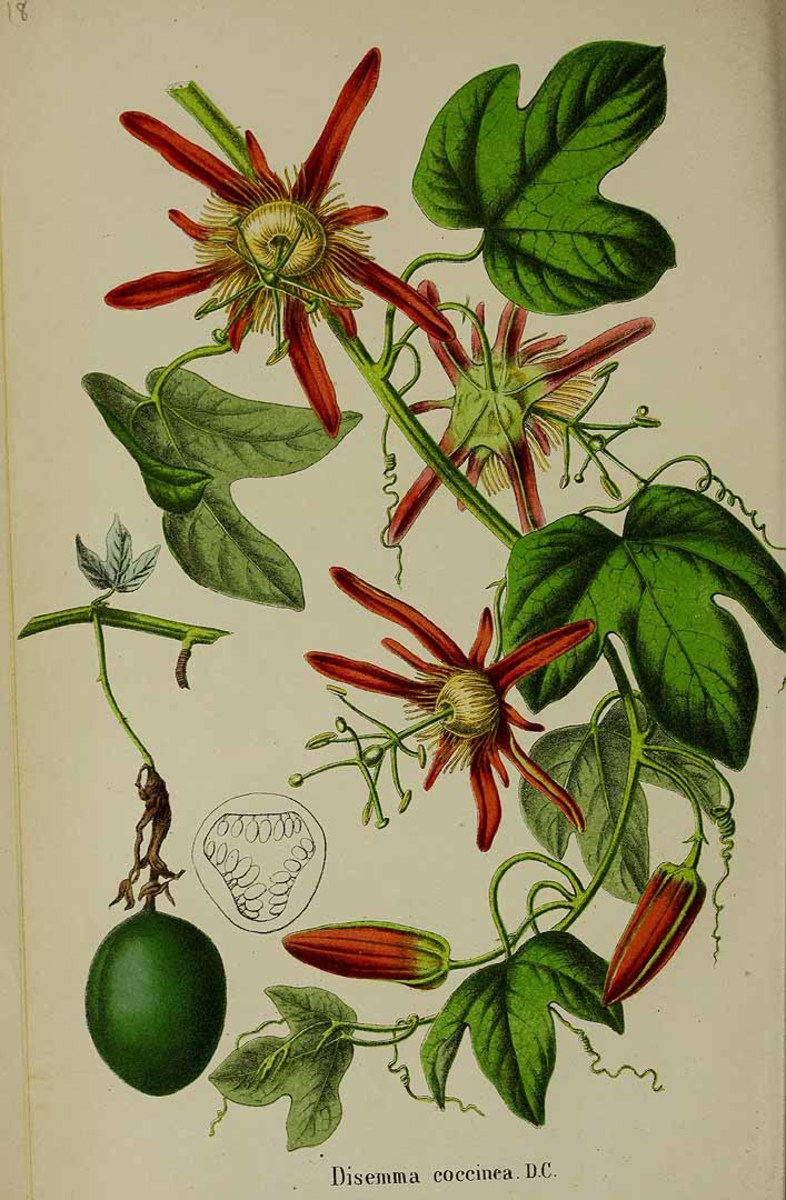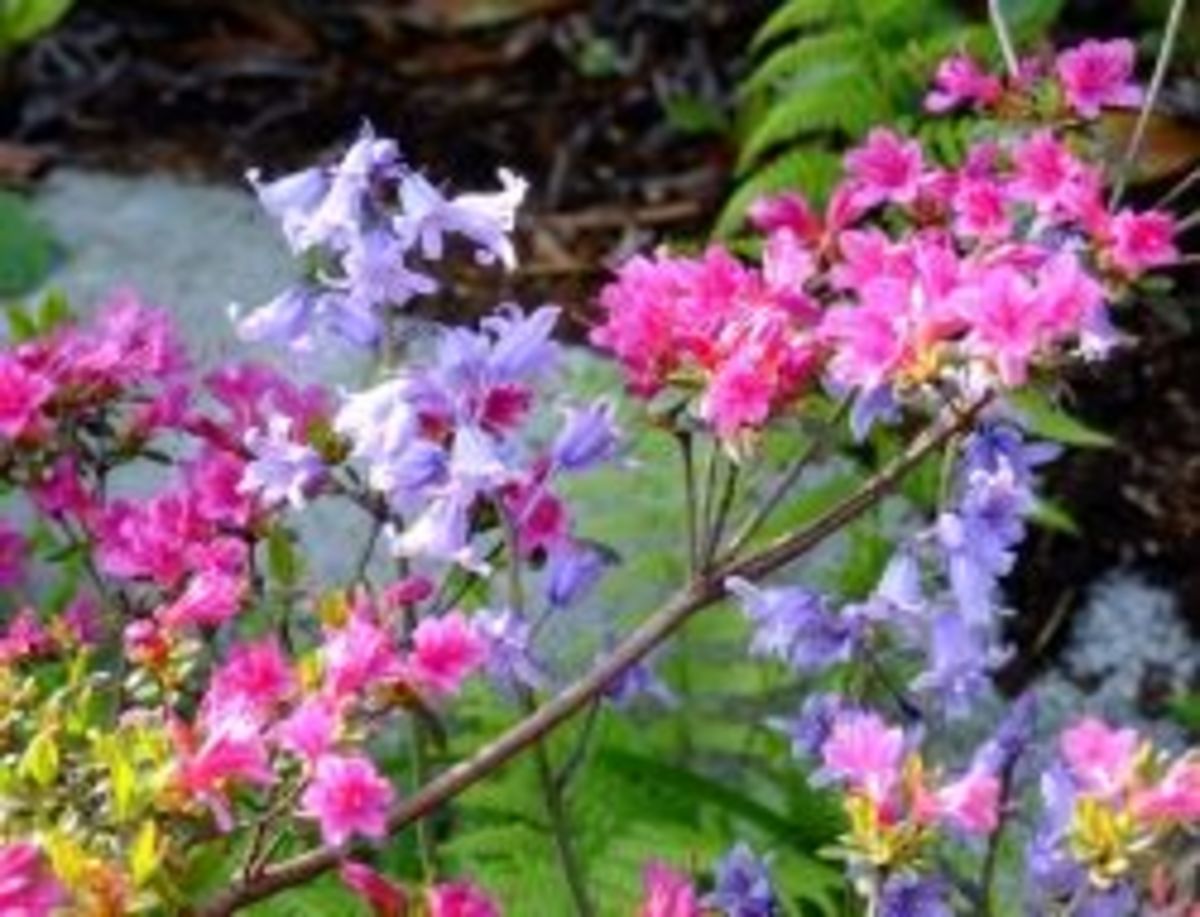Flowers of Alps: a description of three species
panorama of the Alpine meadows
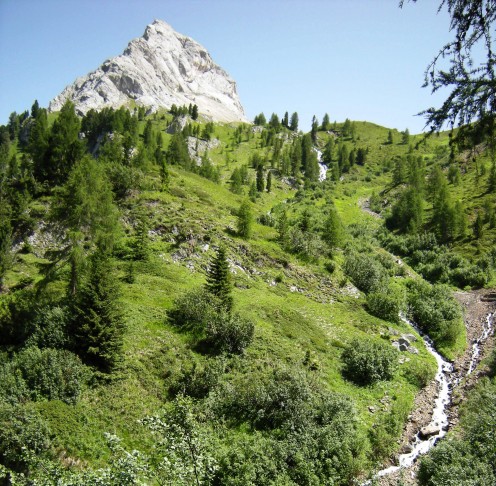
Springtime is at hand. The first cowslips are now flourishing in the plains. The mountains still are covered by white snow, but, soon, the growing heat of the Sun will dissolve the snow of the fierce winter and will enable us to enjoy the seasonal return of all the flowers and fruits of the generous Earth.
Many love the beauties of this Earth, but so few are able to recognize, know and call with its proper name a plant, a flower, a tree. I wish to be helpful in this matter, so that all my walkings on mountains and among forests shall be fruitful and bring delight as well.
Teasel and butterflies
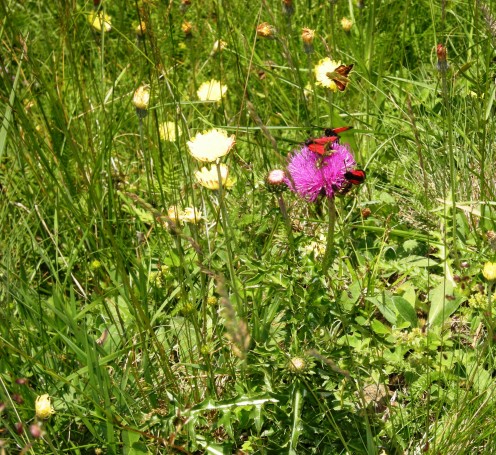
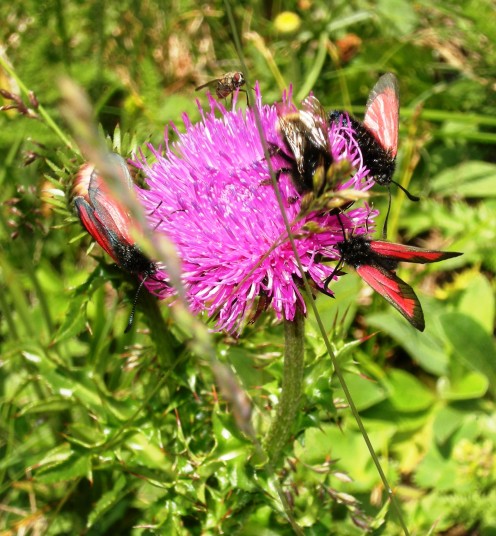
Carduus Defloratus
-Carduus Defloratus (Alpine thistle)
It belongs to the family of Composite. It 'a perennial herb, of vivid color, slender and devoid of leaves on the stem. But in the bottom of the stem, closest to the earth, has very prickly leaves, oblong, divided into lobes of variable size, toothed and thorny. The flower is a peep out of flowers, purple or dark purple, surrounded and protected by a crown of small leaves, all very thorny.
This plant grows, and can be seen, mainly on scree, in non-fertilized lawns and in woodlands full of brightness. It prefers soils rich in humus, very sunny and limestone. It is not uncommon, in the Alps, to see great expanses of lawn, even at high altitude where trees do not grow more, not even the strongest trees, rich with all these colorful flowers and the lawns are invaded by butterflies and bees, which are very greedies of the pollen from this flower.
It 'a very happy plant visited by butterflies and bumblebees of all kinds, especially in July / August when is the peak of its flowering. Its seeds, collected in this period towards the end of August, dried in the sun and then taken into the tea, have cleansing properties, in general, especially for the liver, it is well known since antiquity (Pseudo Apuleius in his book "De virtutibus herbarum"). The tradition considers it as a solar plant, a plant of the summer solstice, for this reason, in all the folk traditions of Europe, is used to protect and ward off harmful spirits.
Rhododendron: particular and general
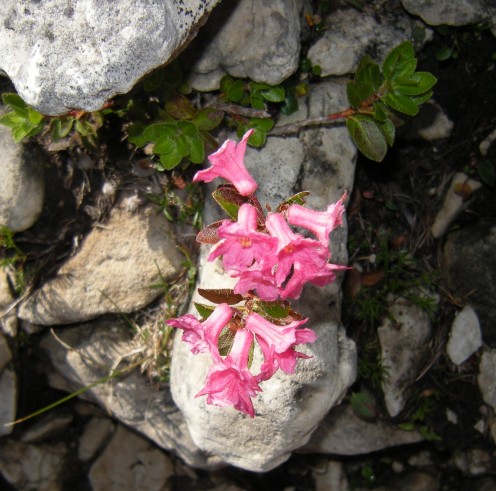
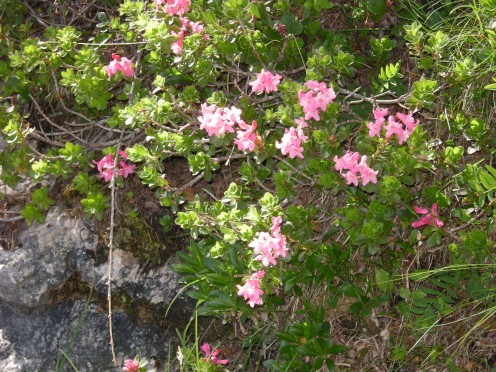
Rhododendron Ferrugineum
-Rhododendron Ferrugineum (Rhododendron ferruginea)
It belongs to the family of Ericaceous. It 'an evergreen shrub, bushy, much branched. Its leaves are oval and oblong, bright green on the upper and rust-colored on the lower side: from this particular is his name. The flowers are pink or purplish red, bell- shaped, are in inflorescences. It blooms in June / July. It lives in high altitude moorland, in the sparse forest, not too thick but moist, rocky places, and preferably on soil acidic. It 'a species that requires high protection, (the Alps have declared this plant a protected species) because its full development requires many years, even a single twig has many dozens of annual rings. In the past, was collected in an intense way, because, with its branches, small twigs were manufactured, used for lighting fires in the fireplaces.
This plant may be infested by the parasitic fungus Exobasidium rhododendri, whitish and with rounded shape. This fungus can be collected and, if marinated with the oil of prunus brigantina, provides a medicated oil for arthritis, rheumatism and sciatica. However the leaves are highly toxic and in any Herbal manual is indicated as not suitable for personal use, unless you are experienced herbalists.
This plant was well known in antiquity: his name is greek and means "tree of the rose" and was also called "pink graduation" because its leaves resemble the laurel. Pliny refers to it, recalling the toxicity of its leaves, especially for the animals; Apuleius speaks of it also in his "Metamorphoses," when the protagonist, Lucius, mistakes it for a bush of roses, and realizes his mistake finally, because the rhododendron has no scent.
Its beauty, coupled with its venom, have meant that in the vocabulary of flowers is a symbol of the misleading allurements.
Aconite: white variety and a dark purple variety (also known as Hecataeus)
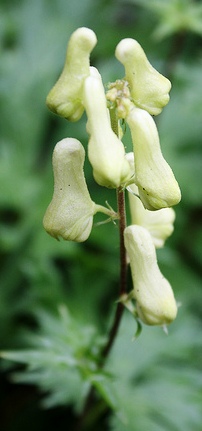
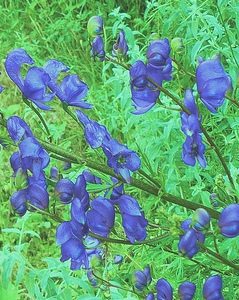
Aconitum napellus
-Aconitum napellus (Aconite)
It belongs to the family of Buttercups. It is a protected species. The aconite is a perennial plant, with a sturdy stem that can become up to one meter high, the leaves are deeply affected on the margin, to take an almost ragged form.
The flowers are very distinctive and very beautiful, when there's his full flowering in July and August, are colored dark blue or bluish purple very intense. Each flower has five sepals. The upper petal is shaped like a helmet, two egg-shaped petals are on the sides and are called "wings", while the two lower petals are very small and hidden. The corolla is composed of yellow filaments that can be seen only if the flower is fully opened. It grows mainly in alpine meadows, along the course of streams and near the huts on moist soil rich in nutrients, and also in undergrowth.
It is one of the most poisonous plants known, its active ingredient, the aconitine, is a poison that is absorbed directly through the skin. As taught the ancestors, Pliny recalls: "there is no evil from which don't derive something good." So, this poisonous plant is also used for medical use, it has properties painkillers, decongestants, anti-inflammatory and sedative and are studied its antitumor properties.
In antiquity, however, was used primarily as a strong poison, spread on the tips of arrows and weapons, and the farmers used it to kill the wolves that threatened their herds. According to legend, the name of this plant is derived from Acone, the port of Heraclea in Bithynia, where it sprung for the first time from the drool of Cerberus, driven by Heracles during the twelfth labor. According to the derivation of terminology, instead, Ovid, said that the name derives from "akone" that in greek means stone. "An herb that is born and is resistant on the hard stone and so is called aconite by the peasants."
The flower has the names: "Helm of Jupiter", "Helm of Odin" or "Helm of Thor" and in the Norse mythology it represents the errant knight and it is said that it has the power to render invisible. It is also called "Coach of Venus" because its reproductive system looks like that of the women. It is best known as "Devil's Grass," was widely used by witches for their magic, and also was one of the ingredients of the famous ointment with which witches could went, flying, to the sabbath.
general informations: if you wish to learn more...
- Aconitum napellus - Wikipedia, the free encyclopedia
- Order Aconite, Aconitum napellus, Herb Seeds
Order Recognized as a poison since antiquity . Contains Aconite, a useful sedative for many conditions. Aconite, Aconitum napellus, easily at Sand Mountain Herbs.com. Aconite and every herb sold is useful medicinally or in some other practical applic - Rhododendron - Wikipedia, the free encyclopedia
- Henning\'s Rhododendron & Azalea Pages
Henning's rhododendron and azalea page: how to grow them and trouble shooting problems. - Quarterly Bulletin of the ARS - Vol 23 No 4, Black, Historical Survey of Rhododendron Collecting Wit
- Flora of the Alps - Wikipedia, the free encyclopedia



